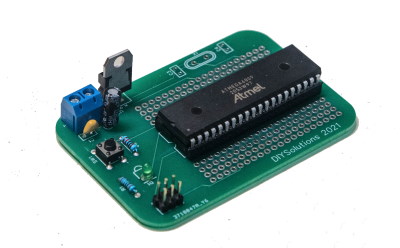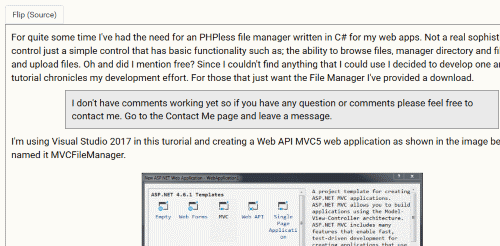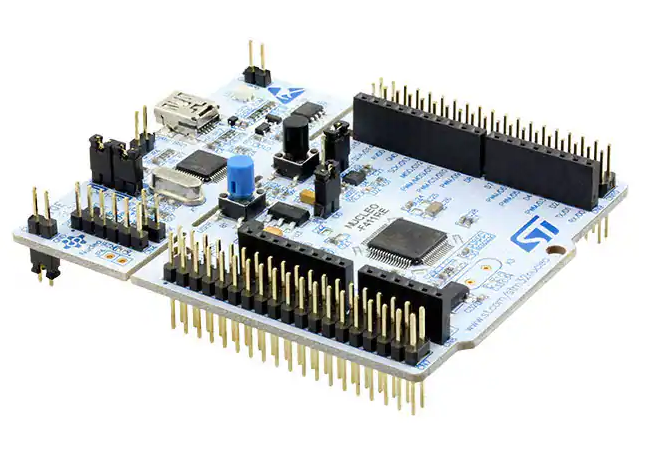Category listing for Tutorials
I used to struggle when it came time to remove my print, using blue tape when the printer finished but with this simple trick you can remove the product easily!

After working with the ATmega4809 off and on for a few months now I'm finding that it's pretty easy to work with, once you learn the ins and outs and actually read the data sheet. The problem that I've been running into is that because it is such a new chip there is very little example code or tutorials relating to it.

In this, the second in the ARM tutorial series we take a look at the STM32 Timer peripheral. The STM32 embeds several timers that provide a variety of functions, both Output and Input Capture that provide timer critical operations. The STM32 Timer peripheral is very versatile and "provide multiple operating modes to off-load the CPU from repetitive tasks while minimizing interfacing circuitry needs".

The AD9833 Signal Generator is a relatively inexpensive low power DDS device that can be used for a miriad of applications.
Computer Numerical Control (CNC), put very simply, is a process whereby a computer is used to control machining tools to fabricate some object. The CNC process can be used to control tools such as; Mills, Lathes, Routers, Drills, etc.. In this article we will be discussing the Desktop CNC Router.
One of the most important functions in embedded electronics is the abitlity to communicate with other processors or integrated circuits and one of the primary ways that the Arduino Due can accomplish this is with the UART/USART Controllers. For those not familiar with this method of communications I recommend the Serial Communication[4] article at Sparkfun.com.

The new ATmega4809 are part of the megaAVR-O line of processors with 48KB flash, 6KB SRAM, 256 bytes EEPROM with a clock of up to 20MHz. The new megaAVR-O series provides additional functionality including; an Event System, enabling direct peripheral-to-peripheral signaling, an Configurable Control System and a CRC System.
In this edition of the continuing series of articles uncovering the mysteries of the Arduino Due we will be tackling the problem of creating a Pulse Width Modulation (PWM) signal. To do this we will use two techniques; first the old fashion way with a timer and secondly with the PWM Controller which is specific to the SAM3X8E processor. If you look at the pinout for the Arduino Due you will see that Pins 2-13 are set aside for PWM with 4 of them using the PWM Controller and the rest use the various timer channels.

The Arduino Due has 2 SPI units on board and when configured as Master uses 4 chip select lines to allow selection of up to 16 slaves per SPI unit. The SPI Controller is a sophisticated controller that can be configured in a variety of ways that should solve most serial communications needs.
I'm working on an DLSR Pan Tilt project I found on thingiverse. It's a nice project designed for a small DLSR camera with a fairly good range. I plan on mounting a Raspberry Pi with an attached PiCam so I can do some time lapse photography.

The Flip jQuery plugin is a light weight extension that allows the user to type raw HTML and CSS in a textarea and have the ability to preview the formatted content in a div area without reloading the page. Use this extension in place of a blotted HTML editor like CKEditor when all you need is a simple light weight control.

This is the first in a series of articles that will cover the inner workings of the Arduino Due 32bit board based on the Atmel SAM3X8E ARM Cortex-M3 processor. Each article in this series will cover a discrete sub-system within the micro controller and in this first article we will begin with a discussion of the Parallel I/O controller.

This is the first in a series of articles based on the ARM CPU architecture. A logical place to start is at the beginning so in this article we will be discussing the clock system, which is the heart of the processor. I've always had the theory that when programming an embedded system getting to know the processor, it's capabilities and how it functions in relation to the rest of system is critical.
In a project I am currently working on I needed to output a one shot pulse with a user definable pulse width using the new O-Series ATmega4809 MCU. One of the features of the new ATmega4809 O-Series MCU is Time B's Single Shot mode.

